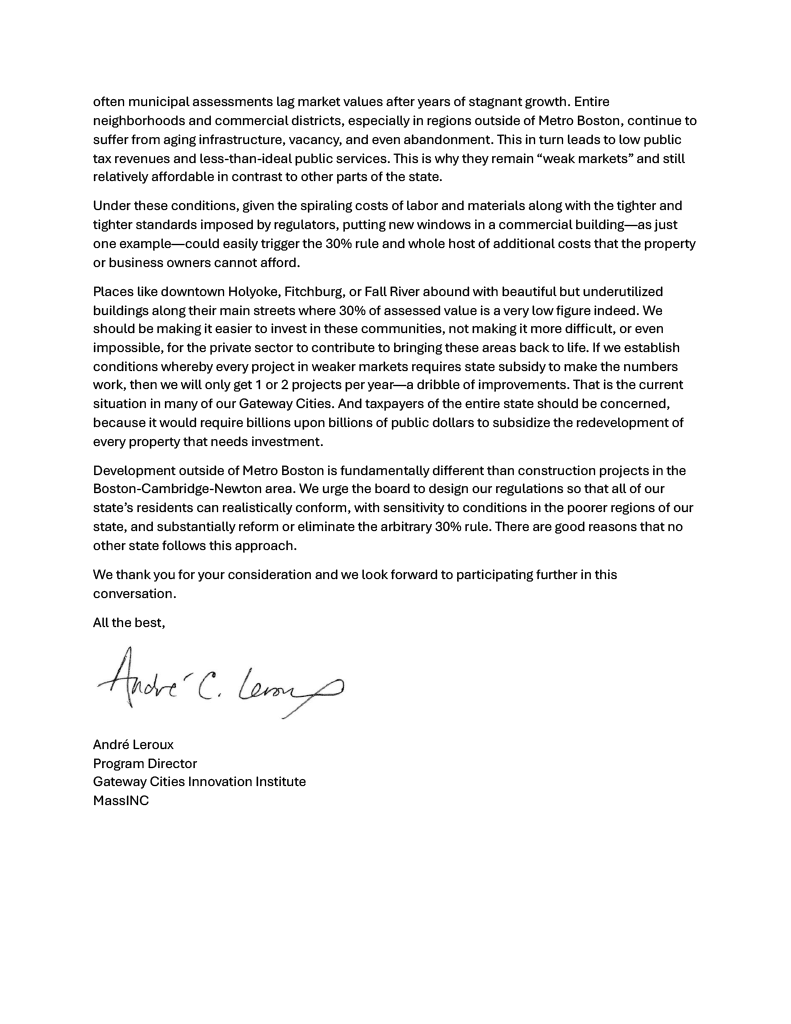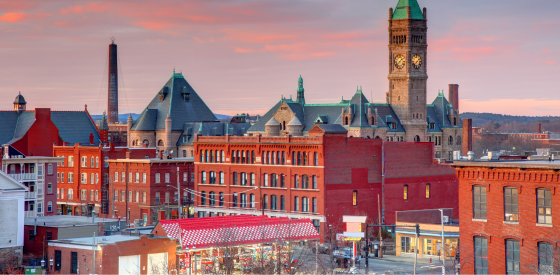On Wednesday, December 11th, the Massachusetts Architectural Access Board’s subcommittee on regulation opened an important discussion about the so-called “30% rule,” which requires that property owners who renovate their buildings cannot spend more than 30% of the assessed value on the improvements, or else they trigger a full range of accessibility requirements that could cost several times more.
In high-value real estate markets like Boston and Cambridge, this standard usually works and is reasonable. However, in many of our Gateway Cities, property values are lower, and the 30% threshold can easily be triggered simply by installing new energy-efficient windows, for example. In communities outside metro Boston such as Holyoke, Fitchburg, and Fall River, this poses a serious barrier to reinvestment.
Even in comparatively strong markets like Worcester, this rule has adverse affects on large public projects like schools, causing headaches for municipalities who are trying to make incremental improvements to the lives of schoolchildren and teachers.
The Gateway Cities Innovation Institute thanks the MAAB for providing the opportunity to weigh in, and for its openness to consider reforms and alternative approaches. We hope to return to the MAAB in January after discussions with our local leaders with some specific recommendations.
See below for our public comment to MAAB below.


